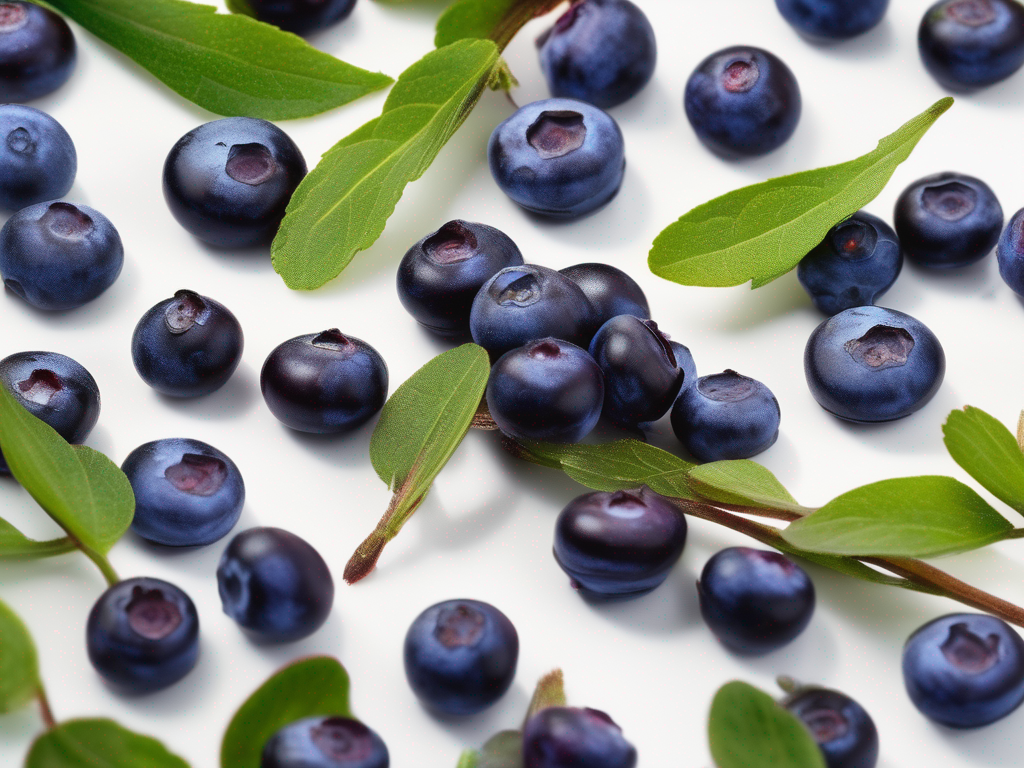
Top Tips for Storing Bog Bilberry to Extend Freshness
Get Your Free Food Safety Cheat Sheet
30 most common foods with instant answers. Print it and stick it on your fridge—completely free!
Top Tips for Storing Bog Bilberry to Extend Freshness
Bog bilberries, also known as wild blueberries, are a delicious and nutritious fruit that is packed with antioxidants and vitamins. Storing bog bilberries correctly is essential to maintain their freshness and flavor for as long as possible. In this blog post, we will provide you with top tips on how to store bog bilberries to extend their freshness and shelf life. (Bog bilberry)
Why Proper Storage is Important for Bog Bilberries
Properly storing bog bilberries is crucial to prevent them from spoiling quickly and losing their nutritional value. Here are some reasons why proper storage is important:
-
Preserve Freshness: Proper storage helps retain the freshness of bog bilberries, ensuring they taste great when you are ready to enjoy them.
-
Prevent Spoilage: Storing bog bilberries correctly helps prevent mold growth and spoilage, which can occur if they are exposed to moisture or air.
-
Maintain Nutritional Value: By storing bog bilberries properly, you can help retain their nutritional value, including antioxidants and vitamins.
Tips for Storing Bog Bilberries
1. Choose Fresh, Ripe Bilberries
Before storing bog bilberries, ensure you select fresh, ripe berries. Look for plump, firm berries with a deep blue color. Avoid bilberries that are soft, mushy, or have signs of mold.
2. Store in the Refrigerator
How:
- Place bog bilberries in a container or a resealable plastic bag.
- Make sure to remove any spoiled or damaged berries before storage.
- Do not wash the berries before storing them, as moisture can promote mold growth.
Why:
- Refrigeration helps slow down the ripening process and extends the shelf life of bog bilberries.
- The cool temperature of the fridge helps maintain the freshness and flavor of the berries.
3. Freeze for Long-Term Storage
How:
- Spread the bog bilberries in a single layer on a baking sheet and freeze them until firm.
- Transfer the frozen berries to a freezer-safe bag or container, removing excess air before sealing.
- Label the container with the date to keep track of freshness.
Why:
- Freezing bog bilberries is an excellent way to preserve them for longer periods, especially when they are not in season.
- Frozen bilberries can be used in smoothies, baked goods, or as a topping for yogurt.
4. Avoid Moisture and Direct Sunlight
How:
- Store bog bilberries in a dry container or bag to prevent moisture buildup.
- Keep the berries away from direct sunlight to avoid heat exposure, which can cause them to spoil quickly.
Why:
- Moisture can lead to mold growth on berries, reducing their shelf life.
- Direct sunlight can cause bilberries to lose their color and flavor.
5. Check for Spoilage Regularly
How:
- Inspect the bog bilberries regularly for any signs of mold, softness, or off odors.
- Discard any spoiled or damaged berries to prevent them from affecting the rest.
Why:
- Removing spoiled berries promptly helps prevent the spread of mold to the rest of the batch.
- Regularly checking the berries ensures you can enjoy them at their freshest.
Conclusion
Properly storing bog bilberries is essential to maintain their freshness, flavor, and nutritional value. By following the tips outlined in this blog post, you can extend the shelf life of your bog bilberries and enjoy them in various dishes throughout the year. Remember to choose fresh berries, refrigerate or freeze them as needed, and keep them away from moisture and sunlight. Regularly checking for spoilage ensures you always have high-quality bog bilberries on hand for your culinary creations.
For more information on bog bilberries, visit our [bog bilberry](/food/bog bilberry) page.
Happy storing and enjoy the delicious taste of bog bilberries! (Bog bilberry)
Related Posts
Here are some other articles you might find helpful:
Authoritative Food Safety References
These agencies and university labs inform every tip and health precaution we publish.
USDA FoodKeeper – Cold Storage Guidelines
Official refrigerator, freezer, and pantry timelines maintained by the U.S. Department of Agriculture.
Visit USDA FoodKeeperFDA Produce Safety Rule & Grower Guidance
Field-to-fridge handling practices that prevent contamination of fruits, vegetables, and leafy greens.
Visit FDA Produce SafetyCDC Foodborne Illness Prevention Hub
Surveillance-backed guidance on pathogens, symptoms, and steps to reduce foodborne illness risk.
Visit CDC Food SafetyUC Davis Postharvest Technology Center
University research detailing optimal storage atmospheres for produce after harvest.
Visit UC Davis PostharvestPenn State Extension – Home Food Preservation & Safety
Peer-reviewed extension bulletins on safe canning, chilling, and reheating practices.
Visit Penn State ExtensionGet Your Free Food Safety Cheat Sheet
30 most common foods with instant answers. Print it and stick it on your fridge—completely free! Want more? Upgrade to the complete guide with 70+ foods.
Scan your food directly and get instant safety info using our AI-powered camera feature.